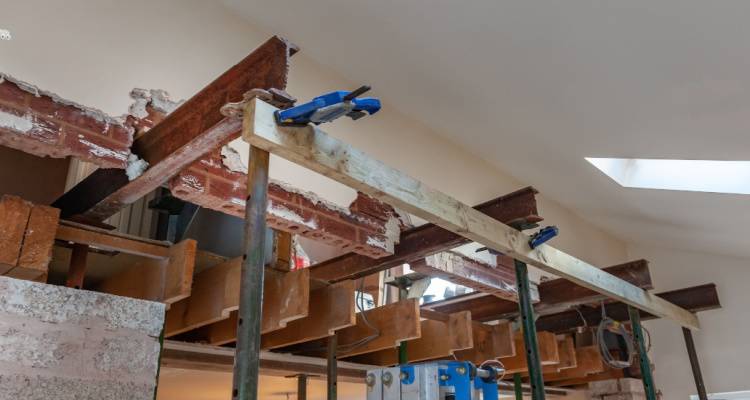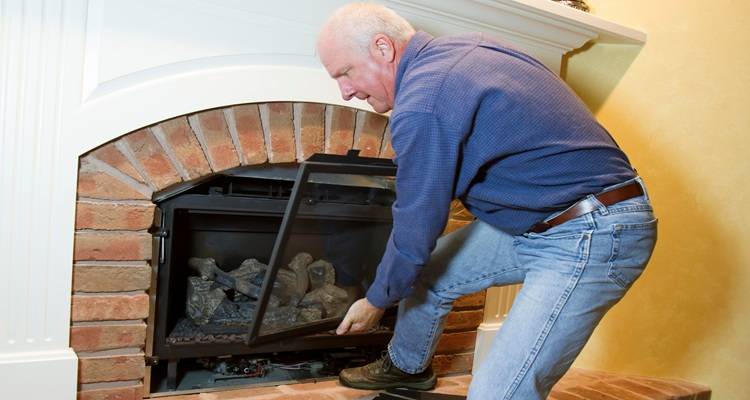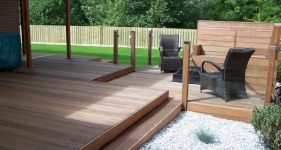Wall Tiling Cost
- The average cost of tiling a wall is around £585.
- The job will take approximately 1-2 days to complete.
- A breakdown of costs for tiling different walls with various tile types.
- How long each tiling job should take and what's involved.
- How to find a tiler near you using MyJobQuote.
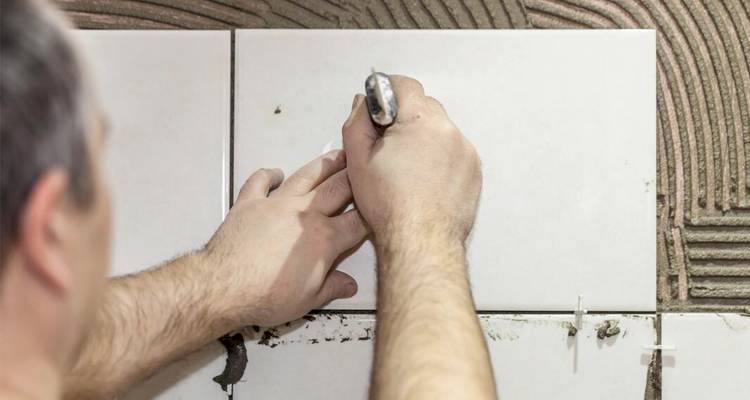
£585
Table of Contents
- How Much Does It Cost to Tile a Wall?
- Factors That Impact the Cost of Tiling a Wall
- How Much Do Tiles Cost?
- Additional Costs to Tile a Wall
- How Much Does a Tiler Charge?
- What's Involved in Tiling a Wall?
- Can I Tile a Wall Myself?
- Choosing Wall Tiles
- Checklist: Hiring a Tradesperson to Tile a Wall
- FAQs
How Much Does It Cost to Tile a Wall?
The total cost to tile a wall will depend on the materials used and the size of the wall to be tiled. Wall tile costs typically range between £80 and £120 per m², with the average cost to tile a wall around £585.
The materials needed can also vary in price depending on what style or type of tile you are looking for. For example, grey gloss ceramic wall tiles (£20 per square metre) are more expensive than stone effect ceramic tiles (£13 per square metre).
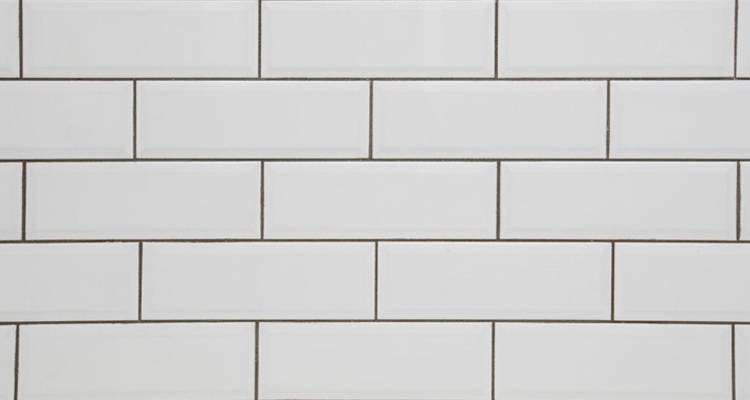
On top of these materials-only costs, labour costs can vary from £150-£250 per day, although they are likely to be higher in the South East when compared to the rest of the UK, which will have an impact on the total cost of your tiling project.
My partner is planning to prime the plaster wall with PVA before tiling. I think he should use a proper primer but he says it's a waste of money as we already have some PVA in the house. Who's right?
Wall Tiling Prices
| Material | Avg. Cost per m² (Installed) |
|---|---|
| Ceramic | £60-£90 |
| Porcelain | £70-£100 |
| Glazed | £75-£110 |
| Natural Stone | £110-£150+ |
| Glass | £100-£160 |
| Mosaic | £120-£200+ |
The final cost of your tiling project will depend on the size of the wall. To give you an idea of the different costs, here are some examples of typical wall tiling jobs.
Cost to Tile a Kitchen Wall?
Your cost will depend on how much of the kitchen wall you are looking to tile. A kitchen splashback would be about 2m² to 3m², whereas tiling a full kitchen would be more like 6m² to 10m².
Cost to Tile a Bathroom Wall?
If you are just looking for half-height tiling on the wall around a bath without a shower and the sanitaryware, this would be about 7m² to 10m².
Cost to Tile a Shower Room Wall?
Although a shower room will typically be smaller, you would probably tile the whole wall, so this would typically be between 6m² and 8m².
Cost to Tile a Wet Room Wall?
Wet rooms can be larger than shower rooms, and need more of the wall tiling, so they would be between 8m² and 12m² on average.
Cost to Tile a Utility Room Wall?
The average utility room will usually only need a simple tiled splashback on the wall, so expect this to be between 3m² and 5m².
Cost to Tile a Cloakroom Wall?
The smallest wall tiling job in most houses, with a simple splashback on the wall behind the sink about 0.5m² to 1.5m².
Based on these wall areas and the average wall tiling costs above, here are the typical costs for each of these wall tiling jobs:
| Room Type | Typical M² | Budget | Mid-Range | Luxury |
|---|---|---|---|---|
| Kitchen Splashback | 2m²–3m² | £120–£210 | £180–£330 | £300–£600+ |
| Kitchen Wall | 6m²–10m² | £360–£700 | £540–£1,100 | £900–£2,000+ |
| Bathroom Wall | 7m²–10m² | £420–£700 | £630–£1,100 | £1,050–£2,000+ |
| Shower Room Wall | 6m²–8m² | £360–£560 | £540–£880 | £900–£1,600+ |
| Wet Room Wall | 8m²–12m² | £480–£840 | £720–£1,320 | £1,200–£2,400+ |
| Utility Room Wall | 3m²–5m² | £180–£350 | £270–£550 | £450–£1,000+ |
| Cloakroom Wall | 0.5m²–1.5m² | £30–£105 | £45–£165 | £75–£300+ |
Factors That Impact the Cost of Tiling a Wall
The type of wall tile you choose will contribute to the overall cost, as detailed above, tiles made from ceramic are almost three times cheaper than those made from natural stone. The room size has a big part to play in the cost as, naturally, the more material you need, the more it will cost.
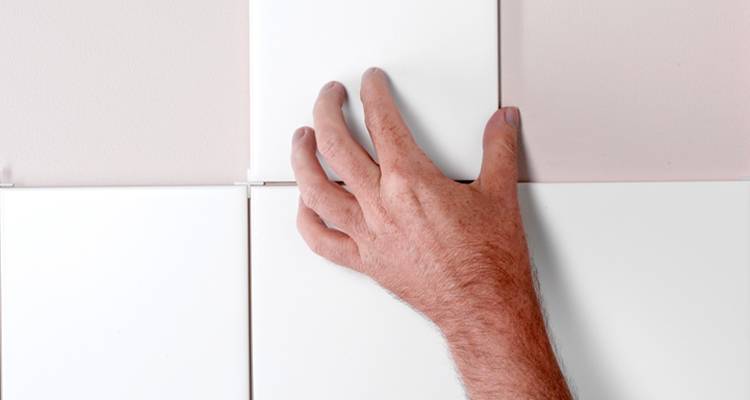
The quality of your walls can have an impact on your tiling costs. If they are in poor shape, they may need some remedial work before they can be tiled, which will increase the final cost.
Any plumbing or electrics that need installing, updating, or rerouting before the wall can be tiled will also add to the cost of your project.
The shape and position of the wall to be tiled can affect the cost, and walls with lots of corners, alcoves, other features, or that are just generally tricky to tile, will take longer and cost more.
Lastly, the location will have an impact as regions in the South of England tend to be a lot more expensive for labour costs.
How Much Do Tiles Cost?
Below is an example of the type of tiles you can purchase to complete the tiling yourself:
| Material | Supply Cost per m² |
|---|---|
| Ceramic | £10-£25 |
| Porcelain | £20-£40 |
| Glazed | £15-£35 |
| Natural Stone | £40-£90+ |
| Glass | £35-£70 |
| Mosaic | £45-£100+ |
Along with the cost of tiles, you should factor in other materials you may need, such as tile adhesive. Depending on what tile material you use, the type of adhesive you need will vary, but here are some examples:
- Ready-mixed adhesive - £12 to £25 per bag.
- Standard cement-based adhesive - £12 to £20 per bag.
- Flexible S1 adhesive - £20 to £35 per bag.
- White rapid-set - £22 to £38 per bag.
For reference, here are some recommended adhesives for wall tiling according to material:
| Material | Suggested Adhesive |
|---|---|
| Ceramic | Ready-mixed |
| Porcelain | Flexible S1 |
| Glazed | Ready-mixed |
| Natural Stone | White rapid-set |
| Glass | White rapid-set |
| Mosaic | White rapid-set |
This isn't an exhaustive list, and some tiles are suited to multiple types of adhesive. Speak to your retailer when you purchase your tiles or read the specifications carefully for the recommended options.
Additional Costs to Tile a Wall
The cost of installation has been outlined in this article. However, there are some additional costs you may need to be aware of.
If you already have tiles in your bathroom/kitchen, you may need somebody to remove and dispose of them. This is added labour, and depending on how easy the tiles are to be removed, it could end up costing you an extra £150-£200 a day.
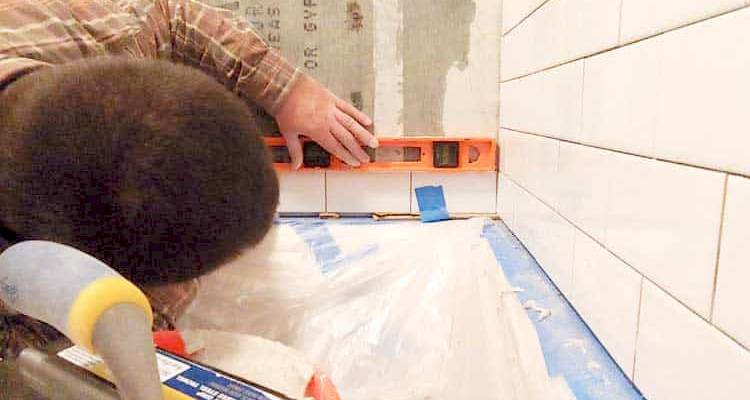
You may also want to consider installing new tiles. For instance, if you have a standalone shower, it may be worth tiling that to make sure it fits in with the aesthetic. The last thing you want is a shower that stands out like a sore thumb.
The cost of retiling a shower comes in at around £250, which can really make the difference to making your dream bathroom come to fruition.
How Much Does a Tiler Charge?
Let's take a look at wall tiling labour costs and typical timescales for this type of job.
As outlined in the previous sections, labour accounts for a substantial amount of the budget.
Based on estimates, you can expect the labour costs to range from £150-£250 a day. One variable of this is the location, as explained before, the labour costs in London can range from £50-£100 more than in the North.
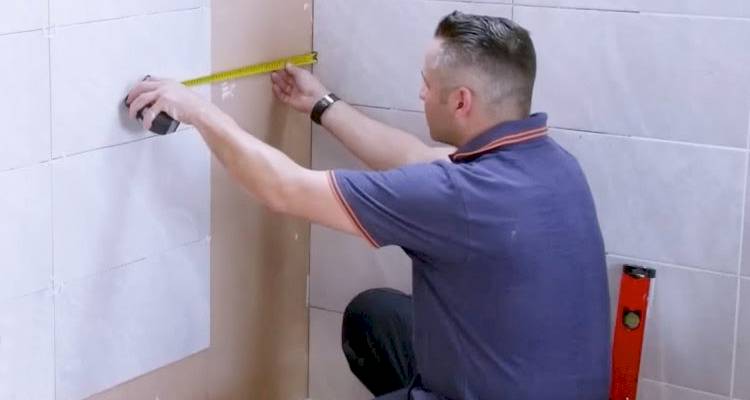
Tiling is labour-intensive, so you can expect even a professional to take some considerable time. Here are some estimates based on m²:
| Size of Area | Estimated Time |
|---|---|
| 1m² | 1-2 hours |
| 2m²-3m² | Half a day |
| 5m² | 1 day |
| 8m²-10m² | 1.5-2 days |
| 11m²-15m² | 2-3 days |
Bear in mind that some tile materials, like natural stone or mosaic, may need extra handling and application time.
Once tiles have been installed with adhesive, they are usually left to set for 24 hours.
Then the grout needs to be applied, which can take one day, depending on the size of the area. From then, the tiles need to be left to fully dry and set for around 72 hours before any heavy use.
What's Involved in Tiling a Wall?
We will now outline how the tiling process is completed.
Prepare the Surface
This is the step that is constant in most projects. This stage involves preparing the area before tiling.
You will need to make sure that the surface is smooth and ensure the area is clean and dry.
Any uneven surfaces need to be repaired, and any appliances or mouldings need to be removed if it is going to impact the laying of the tile.
Start the Layout
It is important to keep the tiles symmetrical and perfectly square.
This can be achieved by locating the middle of the wall and marking it with a piece of chalk. This is so it is easier to pinpoint the middle of the room. From there, you can make any adjustments that are needed.
Advance Your Layout
From the centre point, loosely lay out the tiles along the centre lines. At this point, tile spacers are required to make sure the gaps between the tiles are consistent and that the tiles fit evenly. Once the walls are covered, mark and cut to the desired size.
Apply Adhesive
It is important to note that the adhesive is only usable for around 30 minutes. It would be best if you only made enough adhesive to last you 30 minutes to avoid waste.
Using the flat edge of the trowel, spread the adhesive across the tile at around a quarter-inch coat. This should be spread on the surface of one of the grid areas, avoiding the guidelines.
At this point, you will then use the notched side of the trowel at a 45-degree angle and spread the adhesive to the standing ridges.
Cut Your Tiles
Using a pencil, carefully mark out the desired size and shape on the tile surface, then, using a tile cutter, make the relevant cuts. Once completed, smooth out the sharp edges.
Set the Tiles
This is where the preparation from step one comes in. At this point, you will carefully lay the tiles starting from the centre of the room, one grid at a time. Be sure to finish each grid before moving on.
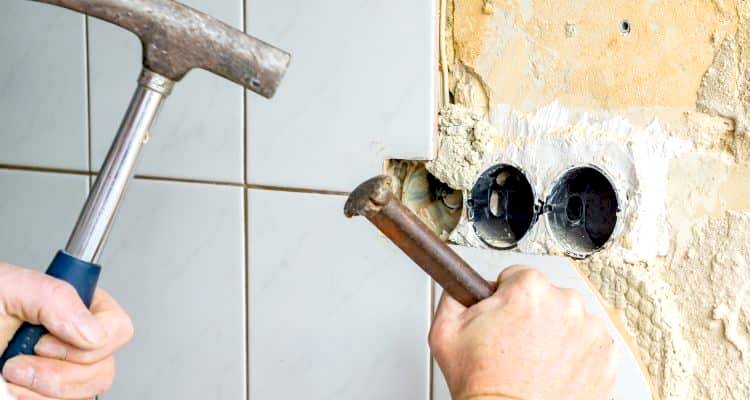
Spacers are useful when laying tiles to keep everything consistent. Once the grid is completely installed, it is now time to tap each tile using a rubber mallet and wooden block to make sure the tiles are fully bonded. Remove the excess adhesive from the joints to make sure the even look is maintained.
Grout the Joints
The grout is a very important step. This gives the finishing touches to make everything come together. The grout needs to be made to last around 30 minutes.
From here, you will remove the spacers and spread the grout into the tile surface. Forcing the grout into the joints is very important to use a rubber float to make sure the grout is fully inserted. Remove any excess grout from the surface immediately using a damp cloth.
The Final Step
Let the tiles fully dry and then give the tiles a good clean again using a damp cloth, do not go too hard, though, as the tiles need 72 hours to set before any heavy use.
Can I Tile a Wall Myself?
Tiling the wall yourself is not the most dangerous DIY project you can do. It would work out substantially cheaper to do it yourself as you can save on the labour costs, but would you be prioritising cost over quality?
Getting the tiles professionally done will always be the safest option, as they have the correct tools, the experience and the knowledge on what to do if something were to go wrong.
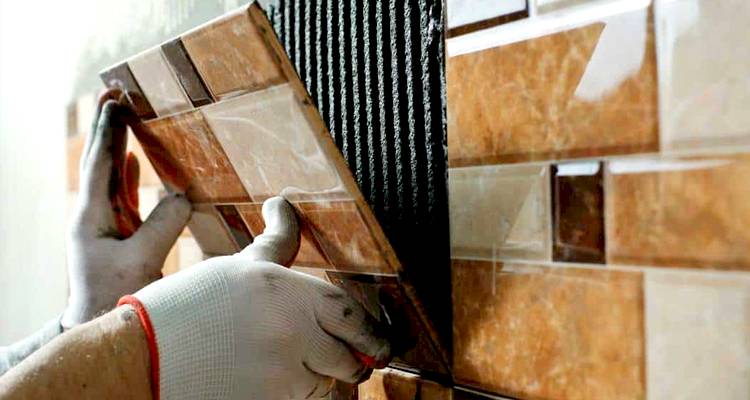
Time is something worth looking at, tiling is very time-consuming, so if you have a moderately busy lifestyle, this could become increasingly difficult to get completed.
There is a real danger of hurting yourself, as ceramic and porcelain can be very sharp when dropped, not to mention when they have been cut. The cutting process can be difficult, especially without the correct tools. The tools required are somewhat unique to the trade of tiling.
Choosing Wall Tiles
Here is a list of wall tiles that you can choose from:
Porcelain Tiles
This type of tile is very common, as it offers a somewhat natural look. The main positive is that the tiles come in different styles and colours, which means you will more than likely find something to match your home.
When the tiles are installed, they are very easy to maintain as the gloss finish is easy to clean and wear and tear takes quite a while to show.
The downside is that they can be challenging to install, meaning if you wanted to save the cost of labour, you would find it difficult to install yourself.
Ceramic Tiles
Ceramic tiles are very durable and can be versatile within a home as they can be installed in many different rooms.
The tiles come in many different styles and colours, so the choice is yours.
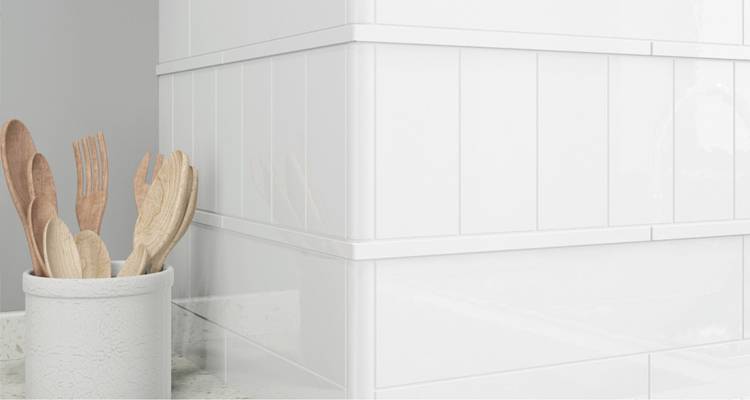
The installation is considered to be very easy, which means you can save some money on labour and have a go at laying the tiles yourself.
The downside is that the tiles do not look as natural as the other tiles on the list, which can be an issue for some people.
Quartz Tiles
Quartz is a luxurious tile and can give a fantastic glossy finish. With quartz being stone, it requires no maintenance or yearly sealing.
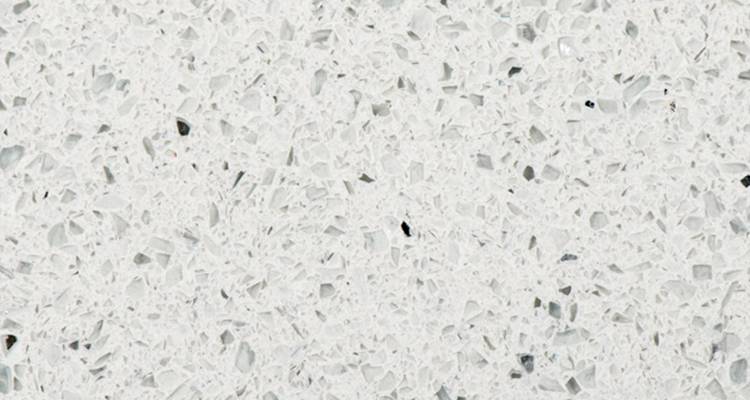
While this is a positive, it can also be a downside, as quartz does not need resealing or maintenance because it is non-porous, meaning it does not absorb water. This could be perceived as a negative point due to the fact that it can become somewhat slippery.
Marble Tiles
Marble tiling is on the higher end of the tiling price range. Marble is elegant, sleek and classy.
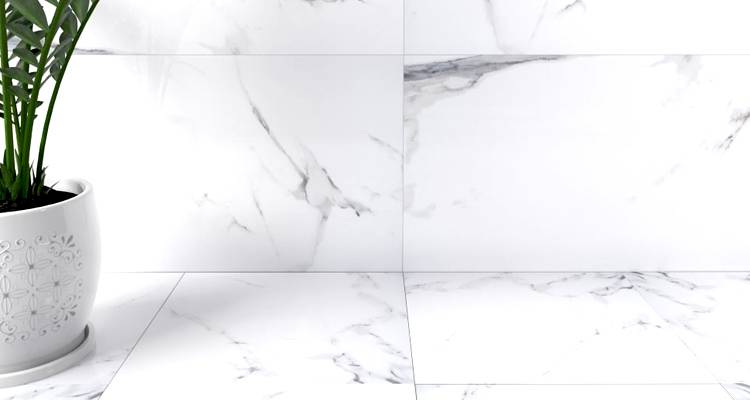
Marble can be quite hard to maintain and can also be very easily scratched. The price tag may be something that can have a negative connotation, as the price is effectively more than other tiles.
Checklist: Hiring a Tradesperson to Tile a Wall
When looking for a professional, it is important that you get the right person for the job.
Below are some important things to check for when choosing your contractor:
- How experienced is the contractor?
- What qualifications does the contractor have?
- Is there a guarantee that the contractor offers with their work?
- How many contractors will be carrying out the work?
- If any issues are to arise, will the contractor fix these?
- Will the contractor take care of the waste removal?
- Does the contractor supply the materials, or will you have to supply the materials?
- How much is the contractor charging? Be sure to get a full breakdown to make sure the money you are paying is worth the work that is being carried out.
FAQs
How do you remove tile adhesive from a wall?
- Fill a container with hot water
- Once the adhesive begins to soften, begin to scrape the adhesive from the wall.
- Apply adhesive-removing paste to the wall.
- Scrape the wall again with a putty knife, which will remove the adhesive.
How thick should wall tile adhesive be?
Can I use wall tiles on my floor?
The main difference is the thickness of the tiles. Floor tiles are usually thicker as, naturally, they will have more weight and more wear on them. Using wall tiles will most likely result in broken tiles a lot more frequently, so if you're looking for floor covering, make sure you factor in any additional costs of floor tiles.
Why should I get tiled flooring?
If you have pets, they are particularly good as you don't have to worry about any mess on carpets as you can simply wipe any mess up.
What are the differences between ceramic and stone tiles?
On the other hand, ceramic is a manufactured product with a very cookie-cutter type of manufacturing process, meaning it is a lot more consistent.
The issue is that ceramic cannot match the natural beauty of the natural stone.
How many floor tiles do I need?
From there, you will know what area you need to fill, and then you can take this information to the manufacturer and cross-reference how many you will need.
For a uniquely shaped room, you should split the room into rectangles and multiply the length by the width to get the square footage of the rectangle. Once this is complete, add the rectangles together and add 10% to make sure you have enough tiles to cover any wastage.
Then, you will know what area you need to fill, and then you can take this information to the manufacturer and cross-reference how many you will need.



